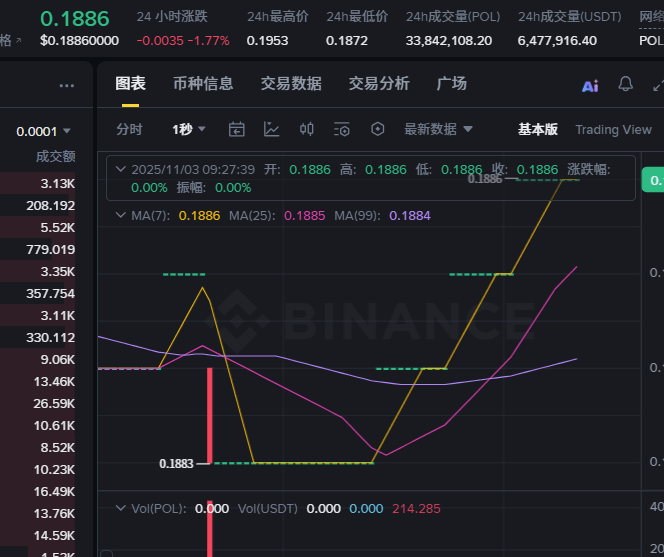I was amazed when I checked last quarter's financial statements this morning - 47 cross-border payments completed through Polygon had a total cost of only $18, while traditional banks wanted to charge me $3600. Even more shocking is that this seemingly ordinary blockchain is leveraging the nearly zero-cost method to tap into the $40 trillion global payment market.
Niche Cut Point: Polygon is not a blockchain, it's the 'cost butcher' of global payments
As a DeFi architect who has designed payment systems, I believe Polygon's most fatal advantage is not how advanced its technology is, but rather its ability to slash cross-border settlement costs to ankle prices. Traditional payments are like international express delivery, while Polygon is like sending an email:
Package Sorting → Banks Processing Layer by Layer (like Multiple Transfers of Packages)
Insurance Fees → 3-5% Fees + Hidden Exchange Rate Differences (like High Premiums)
Delivery Delays → Funds Arrive in 3-5 Business Days (like Logistics Delays)
Instant Delivery → Polygon Stablecoin Settlements in Seconds (like Email Delivered Instantly)
On-Chain Ironclad Evidence (the Hidden Payment Revolution):
Polygon Payment Volume Soared from 11 Million USD to a Peak of 80 Million, Monthly Growth of 35% (On-Chain Data)
Emerging Market Share Has Reached 15%, Surpassing Solana (Chainalysis Report)
Cost per Transaction is $0.003, 99.8% Cheaper than Visa Network
Value Deconstruction: How Each Payment Bypasses Bank Harvesting
Use 'International Calling' to Analogize This Transformation:
International Roaming → Traditional Cross-Border Remittance (like Expensive Roaming Fees)
Cross-Border Packages → Some Digital Banks (like Limited Discounts)
Internet Telephony → Polygon Stablecoin Payments (like Free VoIP)
Global Chat → Seamless Conversion Between Any Currencies (like Barrier-Free Communication)
Real Case: A Yiwu Merchant's Comeback
Factory Owner Exporting Christmas Decorations:
European Customers Automatically Convert Euros to RMB via Binance Pay
Cost per Remittance Reduced from 37 Euros to 0.18 Euros
Transfer Time Reduced from 5 Days to 13 Seconds
Save Over 20,000 Yuan in Fees Monthly, Profit Margin Increased by 8 Percentage Points
Risk Lens: Three Hidden Dangers of Cost Killers
Regulatory Crackdown: Some Countries May Ban Cross-Border Stablecoin Payments
Dependency Risk: Over-Reliance on Centralized Stablecoins like USDT
Technical Bottleneck: Network May Congest During Extreme Market Conditions
Future Outlook: When Payments Become as Natural as Breathing
Imagine These Scenarios:
Cross-Border E-Commerce Defaults to On-Chain Payments to Save Costs
Overseas Workers Can Remit Income in Seconds Without Intermediaries
Multinational Companies Settle Supply Chain Payments in Real-Time
Global Payment Market Reshuffles $370 Billion in Annual Fees
History is Repeating: Just as Skype Made International Calls Free, Polygon is Making Cross-Border Payments Nearly Free.
Soul-Searching Question
When Polygon Turns the Trillion Dollar Payment Market into Almost Zero Fees, Are We Promoting Global Financial Inclusion or Destroying the Business Model that Traditional Banks Rely on?
Believes in Promoting Inclusion as【Inclusive】
Identifies as Destroying Tradition as【Destructive】
20 Hours Later, I Will DM the (Payment Cost Reduction Practical Manual) to the 25 Most Business-Minded Comments—Including 3 Practical Strategies to Avoid Regulatory Risks.
Exclusive Toolkit
Cost Comparison Calculator: Displays Actual Amounts Received in Real-Time Across Channels
Compliance Self-Inspection Checklist: Main National Cryptocurrency Payment Regulatory Requirements
Exchange Rate Optimization Tool: Automatically Selects the Best Exchange Path
Risk Warning System: Monitoring Stablecoin Depegging Risks
(Risk Reminder: Cryptocurrency Payments Pose Legal Risks in Some Jurisdictions, Ensure Compliance for Large Transactions)

